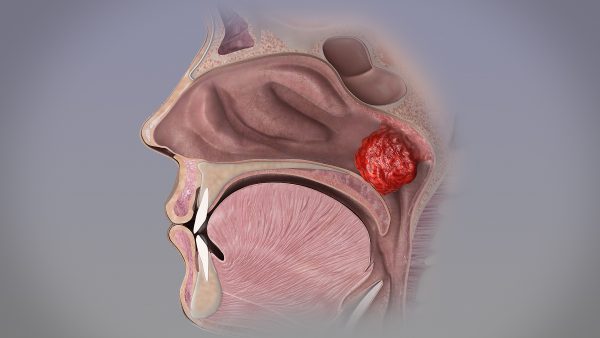
What is an adenoid?
Adenoid is a normal gland found in all children between the ages of 2 and 12-15, located behind the nose.
The gland is usually seen in children up to 12 years of age. By the age of 12, the gland will disappear on its own in most children.
What is the use of adenoid gland?
Adenoid gland acts as a lab in the body to test the air we breathe. The function of the adenoid gland is to detect whether any harmful substance (eg pollen, virus) enters the body along with the breath. As such, the duty of the gland is to immediately start defenses when harmful substances enter the body. As the other organs of the body gain immunity, the adenoid gland will disappear on its own.
What is adenoid hypertrophy?
Adenoid hypertrophy is the abnormal growth of the adenoid gland.
As mentioned earlier, adenoid is an organ present in all children. But in many children, for various reasons, its size can be large. Allergy, heredity, non-breastfed children, persistent infection, air pollution are some of the causes.
What are the symptoms of adenoid hypertrophy?
It is a condition that is commonly seen in children between the ages of 2 and 12-15 years. When the adenoid becomes abnormally enlarged due to the above-mentioned reasons, chronic cold, fever, stuffy nose, earache, ear pus, sore throat, breathing via open mouth most of the time, lack of attention in studies may occur.
Children with adenoid hypertrophy may also exhibit symptoms such as snoring, rolling over in bed, and involuntary bedwetting. Some children may experience sleep apnea.
Similarly, children with adenoid hypertrophy may also have symptoms of undiagnosed hearing loss, frequent earaches, and ear discharge.
Some older children do not necessarily have symptoms such as snoring and earache. The shape of the baby’s face may have changed due to overgrowth of the adenoid gland over a long period of time. The adorable round face of children changes to a long face (adenoid facies). The teeth may be misaligned.
How is adenoid hypertrophy diagnosed?
In most cases, a doctor can tell if a child has adenoid hypertrophy by looking at the child itself. The child’s speech is with a nasal twang (known as rhinolalia clausa).
When listening to the child’s problems, or after listening to the voice of child, most of the time doctors will be able to make the diagnosis.
There are two common methods to confirm adenoid hypertrophy.
- An X-ray of the neck – Taking an X-ray is a simple procedure. A neck x-ray can help determine the percentage of obstruction in a baby’s airway due to an enlarged adenoid.
(Click here to read doctor’s own study on this subject.)
But exposure to radiation, even if it is small, is a side effect of X-rays. - Nasal Endoscopy – Nasal endoscopy is a cost-effective, innovative and simple way to diagnose adenoid hypertrophy. X-rays are only a shadow but with endoscopy, doctor can directly see the back of the nose and confirm that adenoid hypertrophy is the cause of the baby’s nasal obstruction. Moreover, during endoscopy, the adenoid can be clearly seen to understand its size, how much obstruction it causes, and whether there is a problem with the ears. This will help to make informed decisions about which treatment is best.

What is the treatment for adenoid hypertrophy?
According to the percentage of obstruction caused, adenoid gland overgrowth can be divided into 4 stages. Stage 1 and 2 means obstruction below 50%. Stages three and four range from 50% to complete airway obstruction.
If the obstruction is less than 50%, it may be possible to reduce the inflammation of the adenoids with medication alone. Nasal spray is the main treatment method in such patients.
Adenoid hypertrophy that does not respond to medication or is greater than 50% is treated with adenoidectomy surgery.
Adenoidectomy surgery itself comes in many forms.
In the early days, adenoid growth was shaved off in the form of adenoid curettage. At that time, technology was not as advanced as it is today, so it was not possible to see the adenoid during the operation or to remove it completely. Moreover, there were additional complications such as increased risk of bleeding and post-operative pain.
Endoscopic coblation adenoidectomy is an innovative treatment method. In this operation, it is possible to remove the adenoid completely due to endoscopy and the specificity of coblation.
The biggest advantage of coblation is that there is no tissue cutting involved. This operation can be done in less time and without much bleeding.
There is no pain at all, by 6 hours after the operation, the baby can eat whatever he wants, go home in the evening, and go to school within two days.
Will adenoid removal cause future problems for the baby?
As mentioned earlier, the use of adenoid is the body’s defense against disease. But the adenoid is not the only disease-fighting organ. Bone marrow and spleen are all part of immune systems. With that the adenoid is removed and the baby will not have any problems in the future.
Doctors recommend adenoid removal only if the baby is doing more harm than good.
What are the side effects of adenoidectomy operation?
Endoscopic coblation adenoidectomy is a very simple and safe surgery. But like all surgeries, it can have complications.
- Infection,
- Rarely bleeding
- Temporary voice change,
- Rarely in children with very large adenoids, there is a risk of nasal regurgitation when drinking water after surgery.
- There is a rare chance of adenoid regrowth (about 7 in 1,000 kids). All these things will be discussed with you by the doctor before the operation.
- Side effects of anesthesia – These will be explained to you by the anesthetist before the operation.
Are there other treatments other than adenoidectomy?
- As the baby grows, the adenoids will disappear on their own in most babies. But this will take time.
- A nasal spray can be used if the adenoid is less than 50% in size.
However, if the baby has difficulty breathing, if there is water in the ear, or if the adenoid does not go away with the spray, surgery is recommended.
What happens during the operation?
The operation is performed under complete (general) anesthesia. Adenoids are removed through the mouth. Because of that, there are no external scars.
Adenoidectomy is performed as a routine day-care operation. Your child will be able to go home the same evening as the day of the operation. But in some cases a one-day hospital stay may be required.
What are the preparations before the operation?
It should be ensured that the baby is free of any infections before the operation. Fitness from Pediatrician and Anesthesiologist should be taken before operation and their instructions should be followed.
How after the operation?
After the operation, the nurse will check your child’s pulse and temperature regularly. They will give you pain relievers and other medications that your child may need.
Once your child is fully awake from anesthesia, they can start eating normally.
If there are no other conditions, the child will be discharged on the same day or the next day with the necessary medicines as per the doctor’s instructions.
After discharge, the child should rest as much as possible for the first week. Be careful to stay away from people with cough and cold.
Some babies have a bad smell from the nose in the first days after the operation. If it happens like that, it will go away on its own within 2-3 days. Brush your child’s teeth and keep their mouth clean from day one to prevent mouth infections.
Some babies may have slight pain in the throat and ears after the operation. Throat pain is relieved by eating.
When to seek emergency medical help?
If you have any concerns about your child after discharge or need immediate help, contact your doctor or an ENT doctor near you.
You should seek immediate medical attention if any of the following occur,
- Baby is not taking regular food.
- Any bleeding from your child’s throat or nose.
- New or increased pain that is not relieved by regular pain relievers.
- Your child has fever – this could be a sign of infection.